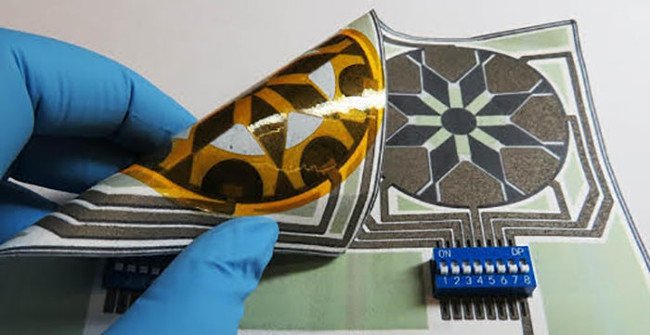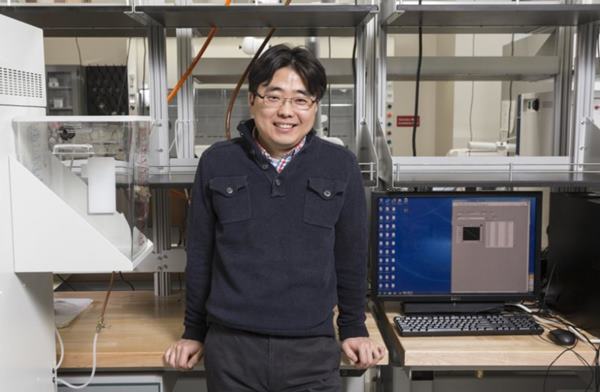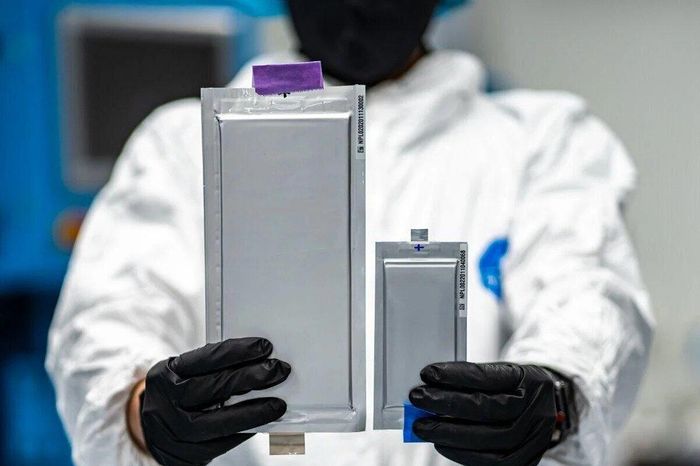New thin batteries, protect the environment and work by ... saliva
Researchers at Binghamton University, New York State University have successfully developed a new battery activated with saliva, superior to normal batteries.
- Ultra-powerful mini flashlights can burn paper and cook food
- Startled with the harmful effects of solar cells on the environment
- Ships traveling around the world for 6 years do not need fuel
This new battery can be used in harsh conditions where normal batteries do not work. This is an outstanding development in the microbial fuel cell industry (MFCs).
 New thin batteries, protect the environment and work by ... saliva Picture 1
New thin batteries, protect the environment and work by ... saliva Picture 1
Photo: Binghamton University
Developing countries have a very high demand for mini power, especially for on-site diagnostic applications that require only a few minutes of microwatt supply. Meanwhile commercial batteries or other energy collection technologies are too expensive and pollute the environment.
Realizing that, Associate Professor Seokheun Choi - Binghamton University faculty of Electrical and Computer Science has spent five years researching and developing several types of paper batteries using bacteria to generate energy.
 New thin batteries, protect the environment and work by ... saliva Picture 2
New thin batteries, protect the environment and work by ... saliva Picture 2
Associate Professor Seokheun Choi.(Photo: Binghamton University.)
Along with his research assistant Maedeh Mohammadifar, Seokheun Choi created a high-performance biofuel battery from paper. To do that, they built microbial fuel cells that contained inactivated freeze-dried cold cells, capable of transmitting electricity outside the cell's shell, called exoelectrogenic .
After being wetted with saliva, exoelectrogenic cells are capable of generating electricity with a long duration of several minutes.
This type of battery is superior to other conventional power solutions. Even in the most resource-constrained environments, the biological fluids required for battery activation are always available.
Currently, the power density is only a few microwatt / cm2, but when connecting 16 micro-fuel cells together on a sheet of paper, it will provide enough lighting energy for an LED. Thus, the current problem is the need to improve power capacity, hundreds of milliwatts of energy will be generated. Choi and his colleagues are trying to solve that problem.
You should read it
- Can saliva foreshadow death?
- Experience choosing the best battery drill
- Learn about some Battery technologies
- Top 4 best 18V battery drills today
- How to discharge laptop battery properly and effectively
- What kind of best and cheapest battery drill?
- Use a battery drill or electric drill
- How to recover and improve performance for battery-powered laptop batteries
- How to charge, battery car questions when the car is dead
- How to Clean Battery Terminals
- Instructions to enable / disable Windows 10 Battery Saver (Battery Saver) feature
- Don't, and exactly, never leave your phone down to 0% battery!
May be interested

Successful fabrication of filters removes salt from seawater to convert into drinking water

Smart cell home box knows 'transformation', fully self-assembled in 10 minutes

Infra-red Wifi is 112 GB per second, 300 times faster than the current speed

Elon Musk: Tesla's self-driving car will amaze the world

Is it possible that someday cells in your body can connect to your smartphone?

Microsoft Research is creating an AI capable of writing code in seconds






 Can saliva foreshadow death?
Can saliva foreshadow death? The Bluetooth chip works without batteries, taking energy from the waves in the surrounding environment
The Bluetooth chip works without batteries, taking energy from the waves in the surrounding environment Successfully manufactured smartphone batteries that work well in conditions of -70 ° C
Successfully manufactured smartphone batteries that work well in conditions of -70 ° C How do electric car batteries work?
How do electric car batteries work? Alarming truth: Lithium batteries can be an environmental disaster
Alarming truth: Lithium batteries can be an environmental disaster How to protect your mental and physical health when in a toxic environment
How to protect your mental and physical health when in a toxic environment